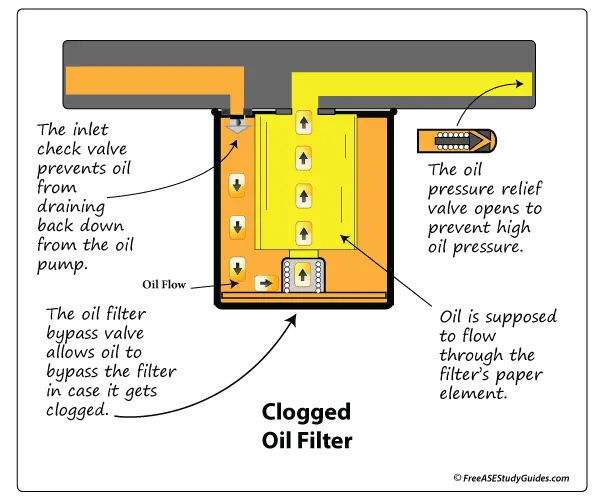Oil Pressure Valves

There's more to the average oil filter than meets the eye. Inside the filter are the inlet check valve and the bypass valve.

The inlet check valve prevents oil from draining back when the engine isn't running.
The bypass valve opens if the filter gets clogged. This valve allows the oil to bypass the paper filter and run straight through to the engine.
Oil flows from the outside of the oil filter through the filter element and then through the middle before re-entering an engine.
If the filter element becomes clogged with contaminants and the bypass valve doesn't open, the pressure will build, and the filter will balloon.
An oil pressure relief valve prevents excessive oil pressure from developing in the engine. The valve contains a spring that allows just enough oil to bypass the system and return to the sump or oil pan to maintain system pressure.
If the valve is stuck closed, engine oil pressures would rise. This closed valve could result in high oil pressure and a ballooned oil filter.
On the other hand, if the oil pressure relief valve is stuck open, the oil pressure will be too low, possibly resulting in engine damage.
Be careful when removing an oil pressure relief valve, note the direction of the valve in the pump housing or block and visually inspect the valve for scoring.
Installing the valve backward may result in no pressure at all. Use an oil pressure gauge to read and diagnose any oil pressure problems.